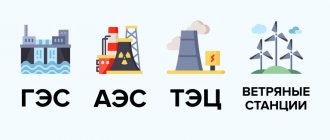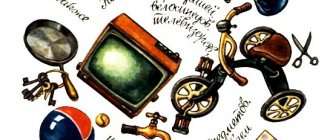How much do artists earn?
On average, artists' salaries range from 40,000-50,000 rubles per month. Here, for example, are statistics for St. Petersburg:
You can increase your earnings if you take freelance orders. For example, teaching others how to draw. One individual lesson costs 1,500-2,000 rubles.
And if you boost your personal brand through social networks, you can take one-time orders for website design, decorate events, or paint portraits.
Website design can cost either 1,000 rubles or 20,000 rubles, depending on the complexity of the work.
For designing a major event you can get more than 30,000 rubles. And portrait painters generally receive more than 20,000 rubles for one portrait.
If you increase your visibility, you will be less and less forced to fulfill orders that you don’t like.
Where to study to be an artist?
- If you are in school and finishing 9th grade. There is still an opportunity for you to enroll in an art school. Colleges also train artists and designers of various genres.
- If you are finishing 11th grade. The world of higher specialized art education is opening up before you, but don’t forget about colleges. You can also go there after 11th grade.
But not everyone needs a higher art education. In order to make money, a diploma is not that important.
3. Drawing courses. You can find both individual and group courses. They do not require any special preparation. Now there are courses in any artistic direction.
Courses also vary greatly in cost and duration. For example, you can buy a course on the basics of painting for 3-4 lessons for 5,000 rubles, or you can take a month-long course in graphic design for 40,000 rubles.
Choose courses according to your task. If you want to start working immediately after the course, choose those that will teach you specific skills.
Don't forget to check reviews for the school and teacher. If possible, take a trial lesson.
4. Master classes. This is usually a one-time group session. Costs approximately from 2,500 to 7,000 rubles. Often they draw one picture per lesson. You can use it simply as a pleasant pastime, or you can improve your skills. For example, sign up for a master class on drawing glass objects.
Whatever learning method you choose, remember that practice is key. Draw every day whenever possible. Improve your skills, and then you will definitely become a successful and famous artist.
What other advice would you give to aspiring artists? Tell us in the comments! Share this article with a creative friend who doubts himself, but in vain!
Training that may be right for you:
- Best Online Drawing Courses
- 10 Best Drawing Courses in Moscow
- Best Artist Training Courses in St. Petersburg
- 10 Best Online Study Schools Photos
What does an artist do? Professions for artists
There are many directions in the artistic field. It is often difficult for beginners to decide what exactly they want to do.
To make things easier for you, we have prepared a list of the main professions for artists:
- Fashion designer and costume designer. Engaged in creating sketches of clothing and shoes. Works in factories, fashion houses, and ateliers.
- Illustrator. Engaged in creating illustrations wherever they are needed. He can work in book publishing, in the advertising field, and on the implementation of cartoons, and in computer graphics.
- Graphic designer. Performs various design works: works on shop windows and interiors of stores or offices, draws posters and diagrams.
- Cartoonist. Draws cartoons and video game characters. Creates cartoon videos and advertisements.
If you study to become a cartoonist, you can become the next Miyazaki!
- Decorative artist. Creates scenery for theatrical productions, concerts, and other public events.
- Graphic artist. Creates graphic images, mainly using a computer. He works in publishing houses, and is often classified as a designer.
- Performance artist. Invents, organizes and implements performances.
Each direction has its own characteristics, but all artists have one thing in common:
What does an artist do? Artist's tools
Anything can become an artist's tool: even a brush, even a stick.
But in the first stages, you should stock up on basic tools:
1. Paints. There are four types: oil, watercolor, gouache and acrylic. Usually an artist finds himself in one thing and works with this material.
- Watercolors can only be painted with a lot of water. Without it, the paints will not give the effect of lightness and subtlety of the image.
- Gouache is thicker than watercolor and applies more densely, so it requires less water.
- Acrylic combines the properties of oil and watercolor. You can use it “dry”, simply squeezing it out of the tube, or you can dilute it with water.
- Oil paints are used with a thinner. They do not require water and take a long time to dry.
2. Brushes. There are synthetic and wool made from pony, goat, squirrel, pig, sable, badger and kolinsky. Choose those that are convenient for you, based on the type of paints used.
- “Pig” and “badger” are most suitable for oil paints.
- “Squirrel” and “goat” work better with watercolors.
- Synthetic brushes are used for acrylic.
- “Pony”, “sable” and “kolin” are universal. They can be used to write with all types of paints.
If you paint with paints, take care of your workspace.
Otherwise, everything will be in color: table, chair, cat, cup of tea 3. Pencils. There are simple and colored ones.
There are usually no difficulties with colored ones
Simple pencils are divided according to the softness and hardness of the lead. There are Russian, European and American designation scales - see the diagram to see how they differ:
Marking and hardness scale of pencils
4. Coal. Coal can be charcoal or pressed. The pressed one looks blacker and fattier, this is its main difference. It is somewhat reminiscent of a pencil, but after completing the painting it needs to be fixed.
There are special means for fixing coal. You can buy them at an art store, or you can use hairspray.
5. Ink and ink. These are common materials for calligraphy. They draw with fountain pens. Mascara is a more water-resistant material than ink.
Calligraphy is very popular in the wedding industry. You can make invitations and place cards. For a wedding for 30 guests you can get about 10,000 rubles
6. Pastel. The texture of pastel resembles pencils or children's wax crayons. It comes in 4 types: dry, wax, oil and watercolor.
- Dry pastel shades and blends well.
- Wax pastels mix well with watercolors, but are used more often for children's drawings.
- Watercolor pastels can be washed out and turned into watercolors.
- Oil pastels hardly mix. It can be washed away with a solvent, and the resulting picture will be similar to those painted with oil paints.
7. Paper. Like brushes, paper is also classified according to the type of material the artist uses to paint.
There are 6 types of paper that artists use:
- Office paper - thin, for pencils (density - 80 g/m²).
- Watercolor - thick, for watercolor (density - 200 g/m²).
- Pastel - for pastels (density - 160 g/m²).
- Coated - for ink and ink (density - 75 g/m²).
- Drawing - for pencils and oil pastels (density - 200 g/m²).
- Craft - for charcoal and pastel (density - 70-90 g/m²).
Office paper is the smoothest. Draft, coated and craft are slightly rougher. And watercolor and pastel are the most textured. The degree of roughness of the paper depends on the material you are drawing with.
The pencil easily draws on office paper. But watercolor will simply flow off it, so you need very textured paper that will hold the paint.
For beginners, it is better to start with drawing paper. It is more accessible, cheaper and easier to use than other textured papers
8. Canvas. The main thing you need to know when buying a canvas is that if you want to paint on it with oil paints, then buy a primed canvas.
They also come on stretchers and on cardboard. Canvas on cardboard is thinner, and since it is glued to the cardboard, it will not be possible to stretch it, unlike canvas on a stretcher.
At the initial stage, you will definitely need paints, brushes, pencils and plain paper. And then, as you gain new skills, you will acquire other tools as needed.
Or maybe you will abandon them altogether and create with your body.
"Untitled Anthropometry (ANT 100)", 1960 © Hirshhorn Museum and Sculpture Garden, Washington, DC, United States © The Estate of Yves Klein c/o ADAGP, Paris
Photo: The Estate of Yves Klein c/o ADAGP, Paris








